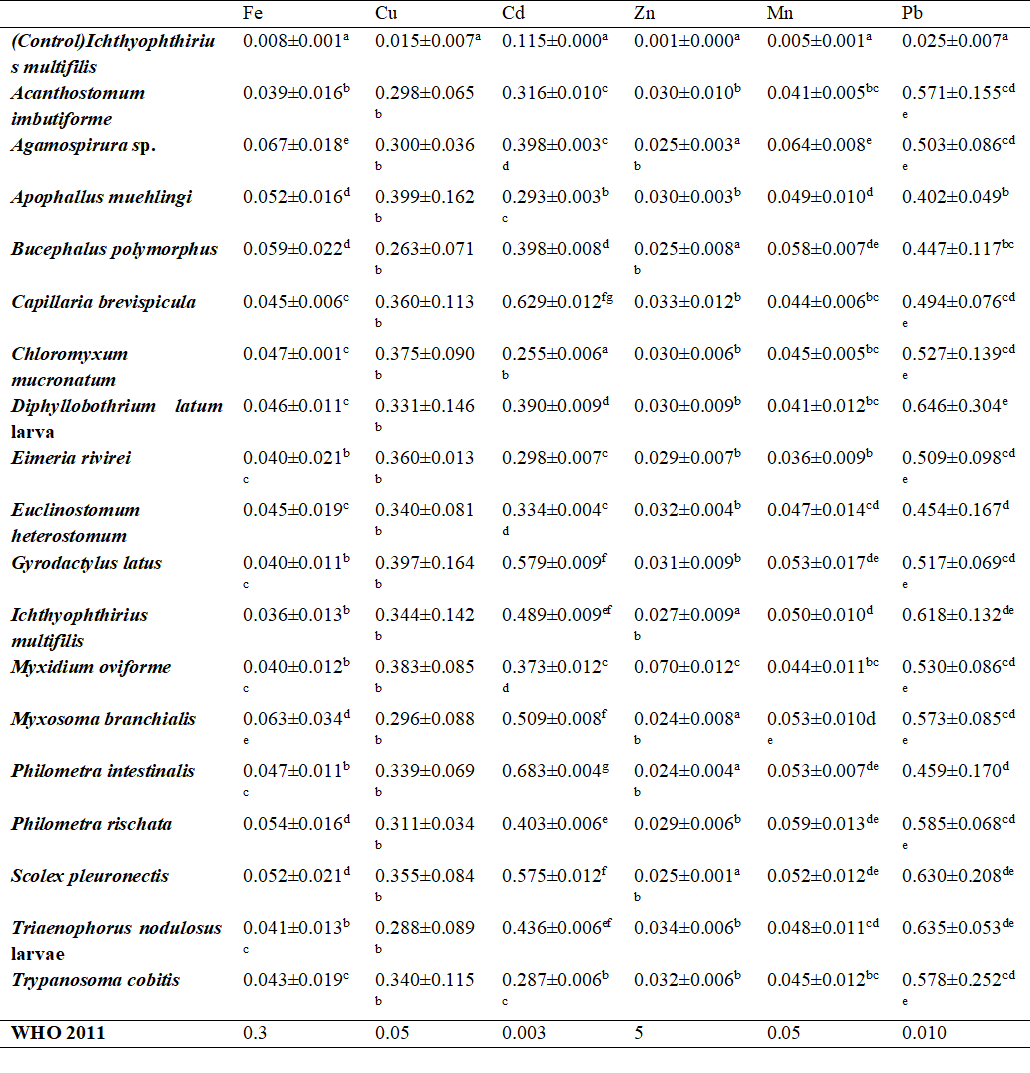Clarias Gariepinus Parasites as Bioindicator For Assessing Water Quality in Omi Dam, Kogi State, Nigeria
Authors
Abstract
Studies using host-parasite dynamics as bioindicator of effects and accumulators of heavy metals for assessing environmental quality are still scarce, particularly in developing countries. This study aimed at elucidating the possible use of parasites of fish in monitoring and assessing water quality. 102 samples of 18 species of parasites of Clarias gariepinus were analyzed for copper, lead, manganese, iron, zinc and cadmium concentrations. Heavy metal concentrations were determined using atomic absorption spectrophotometer. Physico-chemical parameters were measured on sites using Hanna instrument. The nutrients and non-toxic constituents of water were also determined using methods by (American Public Health Association, 1999). The data obtained were analyzed using analysis of variance and significant differences accepted at p ≤ 0.05. Duncan Multiple range test was used to compare the heavy metal accumulation in the parasites and sample t- test was used to compare the values of physico-chemical parameters, nutrients and non-toxic constituents of the water. The heavy metal concentrations in parasites of C. gariepinus were in the order of Lead>Cadmium>Copper>Iron>Magnese>Zinc. Bioindicating capacity of parasites were in the order Nematodes>Cestodes>Protozoan>Trematodes. All physico-chemical parameters of the water (pH, temperature, salinity, turbidity, electrical conductivity, total dissolved solid) except dissolved oxygen were within the permissible level of the WHO (2011) permissible limits. The water nutrients except fluoride were within the permissible limits of WHO (2011). The non-toxic constituents were within permissible limits except NH4+ in the control study sites and PO43- in both study sites that was not within permissible limits. This study revealed that parasites can be ideal indicators for both effects and accumulation of heavy metals in aquatic environments. Findings from this study demonstrate the need for an ecosystem friendly approach towards sustainable management of dams and rivers. This will curb aquatic pollution which can directly and indirectly affect the structure and composition of fish parasite communities and also lead to a health risk in people consuming aquatic resources contaminated with heavy metals.




